This week I was in Rotterdam for a RIPE meeting. On Friday morning I gave a lightning talk called where does my computer get the time from?The RIPE meeting website has a copy of my slides and a video of the talk; this is a blogified low-res version of the slides with a rough and inexact transcript.
I wrote a follow-up note, “Where does ‘where does my computer get the time from?’ come from?” about some things I left out of the talk.
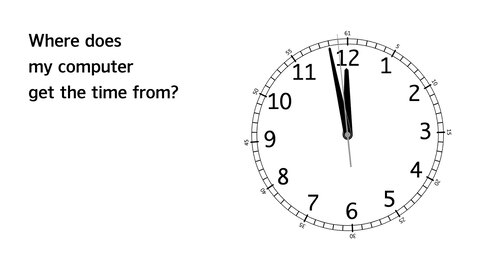
Where does my computer get the time from?
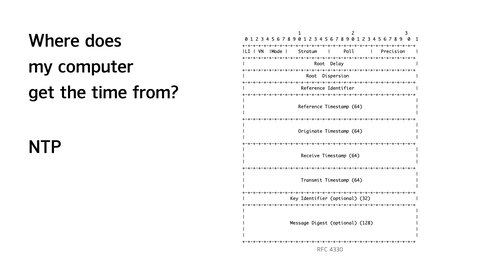
from NTP - here’s a picture of an NTP packet
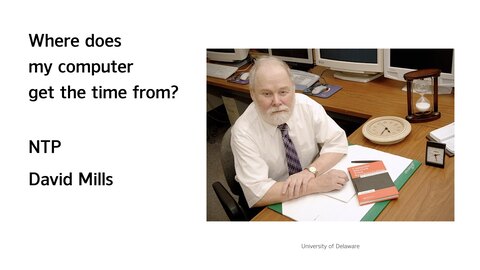
and here’s a picture of David Mills who invented NTP

simple question, easy answer, end of talk? No!
let’s peel off some layers…

stratum 3 NTP servers get the time from stratum 2 NTP servers,
stratum 2 NTP servers get the time from stratum 1 NTP servers,
stratum 1 NTP servers get the time from some reference clock
maybe a radio signal such as MSF in Britain or DCF77 in Germany
but in most cases the reference clock is probably a GPS receiver

here’s a GPS timing receiver
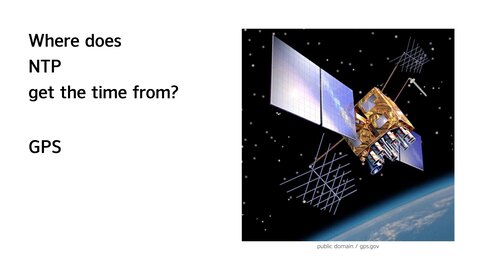
and here’s a GPS satellite
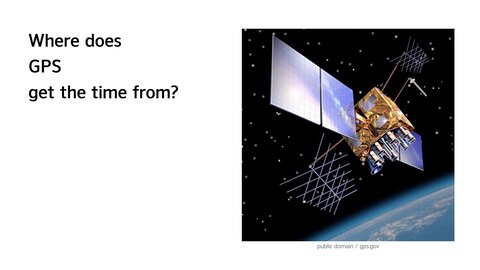
where does GPS get the time from?
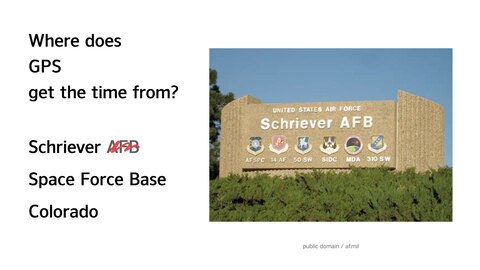
Schriever Space Force Base in Colorado
they look after a lot of different top secret satellites and other stuff at Schriever, as you can see from all the mission logos
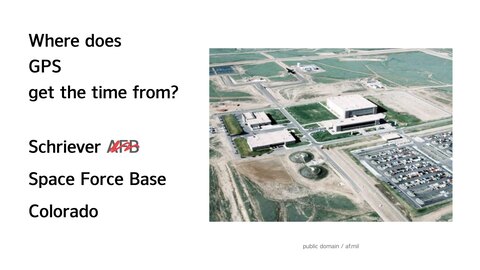
so you can’t get close enough to take a nice photo
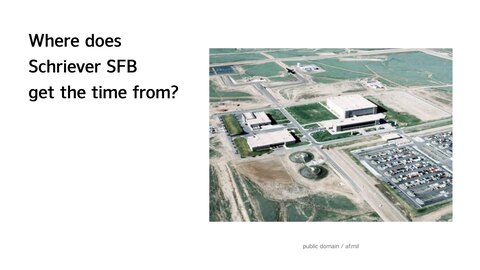
Where does Schriever SFB get the time from?
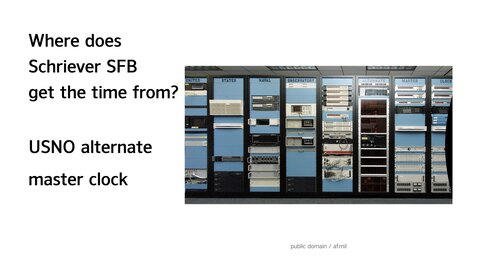
the US Naval Observatory Alternate Master Clock is on site at Schriever in Colorado
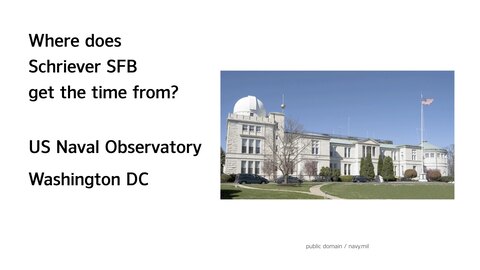
the US Naval Observatory Alternate Master Clock gets the time from the US Naval Observatory in Washington DC
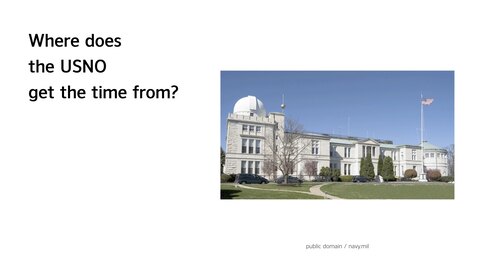
there are three answers

the first answer is atomic clocks, lots of atomic clocks
in the background there are dozens of rack mounted caesium beam clocks
in the foreground the black boxes house hydrogen masers
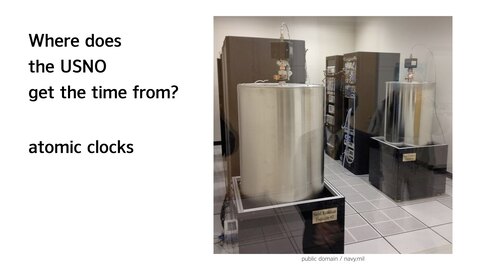
these shiny cylinders are rubidium fountains
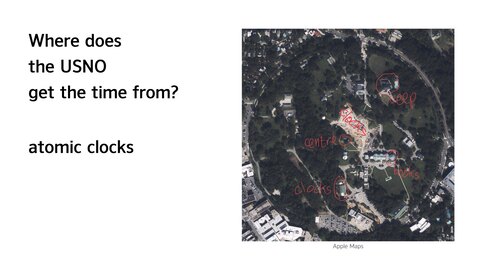
the USNO has so many atomic clocks they have entire buildings dedicated to them
When I was preparing this talk I noticed on Apple Maps that there’s a huge building site in the middle of the USNO campus. It turns out they are building a fancy new clock house; the main limit on the accuracy of their clocks is environmental stability: temperature, humidity, etc. so the new building will have serious air handling.
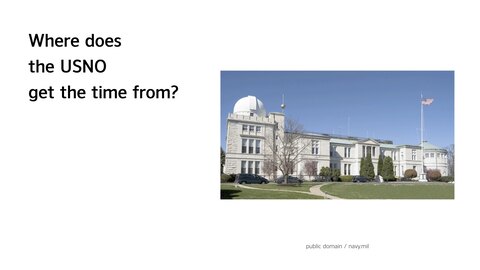
the second answer is that UTC is a horrible compromise between time from atomic clocks and time from earth rotation
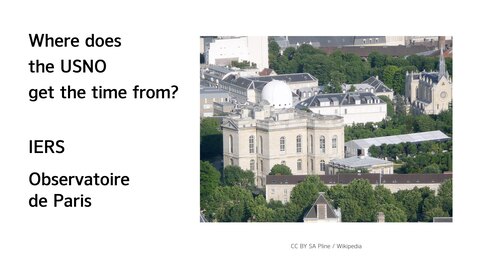
so the USNO gets the time from the international earth rotation service, which is based at the Paris Observatory
twice a year the IERS sends outBulletin C, which says whether or not there will be a leap second in six months time; leap seconds are added (or maybe removed) from UTC to keep it in sync with earth rotation
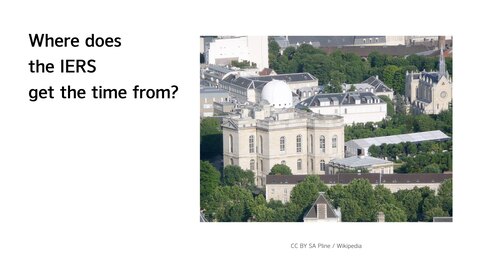
the IERS is spread across several organizations which contribute to its scientific work
for example, you can subscribe to IERS Bulletin A, which is a weekly notice with precise details of the earth orientation parameters
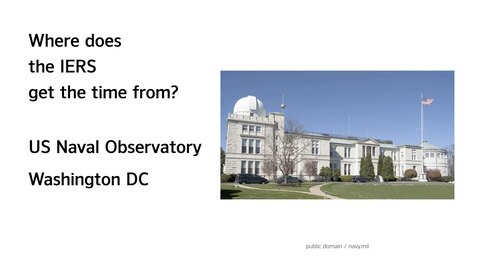
Bulletin A is sent out by the US Naval observatory
they need to know the exact orientation of the earth under the GPS satellites, so they can provide precise positioning
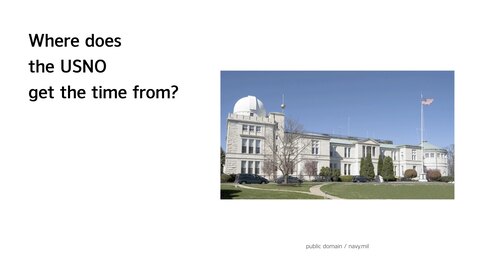
the third answer is, how does the USNO know its atomic clocks are working well?

that information comes from the international bureau of weights and measures in Paris, who maintain the global standard UTC

how does the BIPM determine what UTC is?
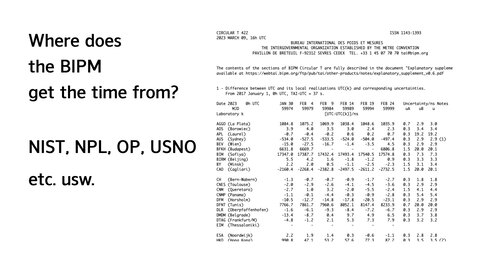
the BIPM collects time measurements from national timing laboratories around the world, and uses those measurements to determine official UTC
periodically they send out Circular Twhich has information about the discrepencies between official UTC and UTC from the various national time labs
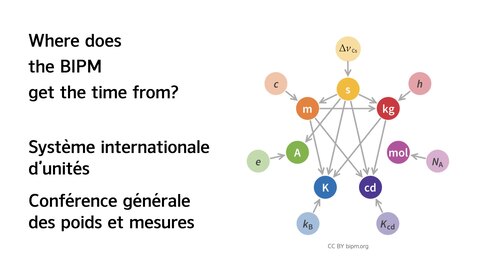
the BIPM is responsible for maintaining the international system of units, which is defined by the general conference on weights and measures
the CGPM is an international treaty organization established by the metre convention of 1875
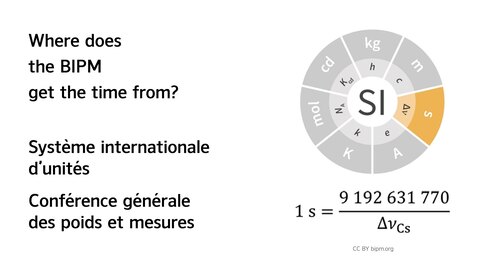
UTC is an implementation of the SI unit of time, based on quantum measurements of caesium atoms
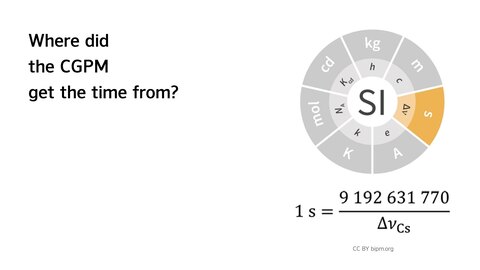
where did this magic number, about 9.2 GHz, come from?
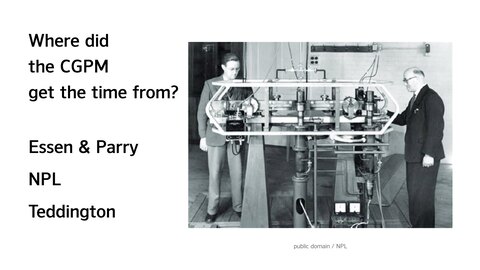
in 1955, Louis Essen (on the right) and Jack Parry (left) built the first caesium atomic clock
the current definition of the second came from the calibration of this clock
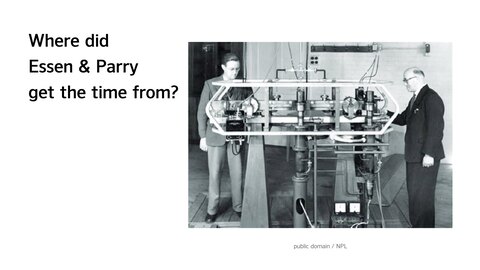
before atomic clocks, the definition of the second was based on astronomy, so Essen and Parry needed help from astronomers to find out how fast their clock ticks according to the existing standard of time
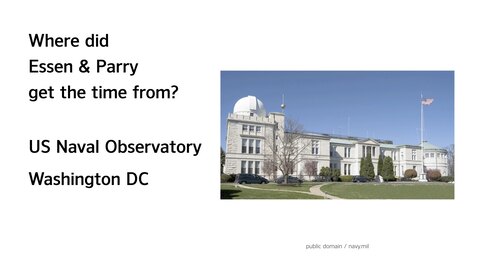
they got help from the astronomers at the US Naval Observatory
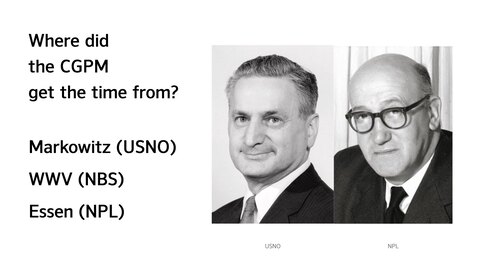
the way it worked was William Markowitz measured time by looking at the skies, and Louis Essen measured time by looking at his atomic clock, and to correlate their measurements, they both listened to the WWV radio time signal broadcast by the national bureau of standards in Washington DC
this project took 3 years, 1955 - 1958
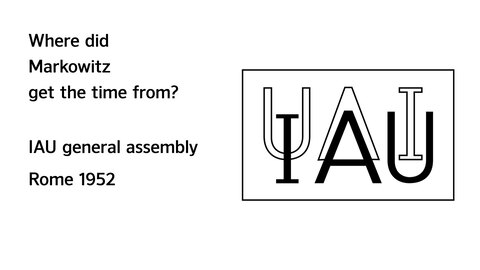
Markowitz was measuring the “ephemeris second”
in 1952 the international astronomical union changed the definition of time so that instead of being based on the rotation of the earth about its axis, it was based on the orbit of the earth around the sun
in the 1930s they had discovered that the earth’s rotation is not perfectly even: it slows down and speeds up slightly
clocks were now more precise than the rotation of the earth, so the ephemeris second was a new more precise standard of time
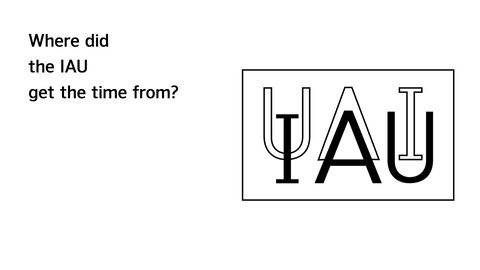
the ephemeris second is based on an astronomical ephemeris, which is a mathematical model of the solar system
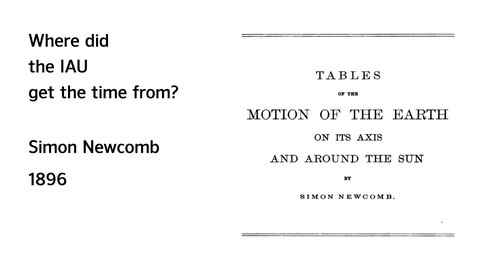
the standard ephemeris was produced by Simon Newcomb in the late 1800s
he collected a vast amount of historical astronomical data to create his mathematical model
it remained the standard until the mid 1980s

here’s a picture of Simon Newcomb
he is a fine-looking Victorian gentleman
where did he work?

at the US naval observatory!
(and the US nautical almanac office)
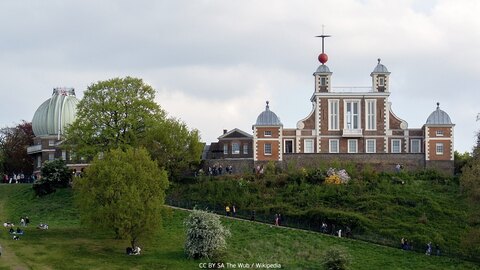
I have now run out of layers: before this point, clocks were set more straightforwardly by watching stars cross the sky
so, to summarise my talk, where does my computer get the time from?
it does not get it from the Royal Greenwich Observatory!